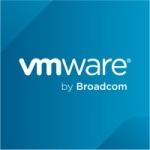What is our primary use case?
I use Grafana for MYSQL monitoring, monitoring the system, and application monitoring.
What is most valuable?
The best thing about Grafana is the visualization. The colors and the ease of use make it very user-friendly. Grafana has a huge community, so we can simply Google it and get the answer if we have any doubts.
The second best thing about Grafana is its alerting system, which is easy to define within Grafana rather than defining alerts in Prometheus.
Thirdly, Grafana is completely free of cost. I use Grafana for many things, and all of them at zero-dollar cost. On the other hand, other monitoring tools in the market, like New Relic and Datadog, offer many features, but Grafana is a good monitoring tool for a small-scale company.
What needs improvement?
One thing I got to know is that Grafana doesn't provide anything for reporting. As a DevOps engineer, I would like to get a weekly report expressing the system's overall performance in the last week. For example, how many alerts were triggered, how many APIs responded with bad requests, and how many failures occurred? All these things are generally required at the beginning of the week so that we can better research and optimize everything that's required.
Currently, Grafana sends a PDF version of the report, and they are not doing anything beyond that. So, that's a feature that Grafana can work on to make it more accurate and better.
In the additional features, I would like to see logs. Logs are basically created when an API is hit. The log contains information such as the API that was hit, the status code, and the time taken. For instance, the log file would store the error message if there was an error in the API. It makes it easier for the developer to debug the API that showed an error. Grafana claims that it has Loki, which is used for logging and saving logs. However, I could not configure Loki with Grafana to see my logs. Grafana could look into this field and make changes to improve it.
For how long have I used the solution?
I have been using this solution for three months now. I am using the latest version, 7.4.
What do I think about the stability of the solution?
Grafana is stable. There were some bugs in the previous version, but the latest version is bug-free.
What do I think about the scalability of the solution?
Grafana is scalable for product-based companies, but for service-based companies with multiple projects, it's difficult to scale using Grafana. However, since it provides all the features for free, it's manageable.
We are a small company of 70 people, and I am currently the only one using Grafana. We started using it after I researched and decided to use Prometheus and Grafana for monitoring.
How are customer service and support?
The customer support team of Grafana is available for the enterprise and pro versions. However, there is a vast community of Grafana users, and if you require any help, you can post your query, and you will undoubtedly receive an answer. Most likely, your question may have already been asked and answered in the community forum, so checking there first is worthwhile.
How was the initial setup?
Setting up Grafana can be a bit tricky. If I rate the difficulty level on a scale of one to ten, I would say it's around five. But once you have connected one data source, it becomes easier to connect with other things.
What's my experience with pricing, setup cost, and licensing?
Grafana is not entirely open source, as it has three versions: the free, enterprise, and pro versions. Most of the required features are available in the free version of Grafana, which you will use as a visualization tool, while Prometheus will serve as your monitoring tool.
Therefore, you won't use Grafana as a monitoring tool. If you use Grafana's features, they are free of charge. Hence, you can use Prometheus and Grafana to fulfill your needs. However, if you are using MongoDB as your database, its plugin is not available in the free version of Grafana, and you'll need to purchase the enterprise version.
What other advice do I have?
I will be able to comment on whether Grafana is useful for you or not, depending on various factors. For instance, I would like to know the scale of your company, the products you are making, the scale of production, and whether you are a product-based or service-based company. Additionally, I would like to know what other features you require from your monitoring system.
If Grafana meets your criteria, I suggest using it because it is either free or comes at a cost. The free version of Grafana is usually sufficient for most users.
Overall, I would rate Grafana an eight out of ten.
Which deployment model are you using for this solution?
On-premises
Disclosure: My company does not have a business relationship with this vendor other than being a customer.



















